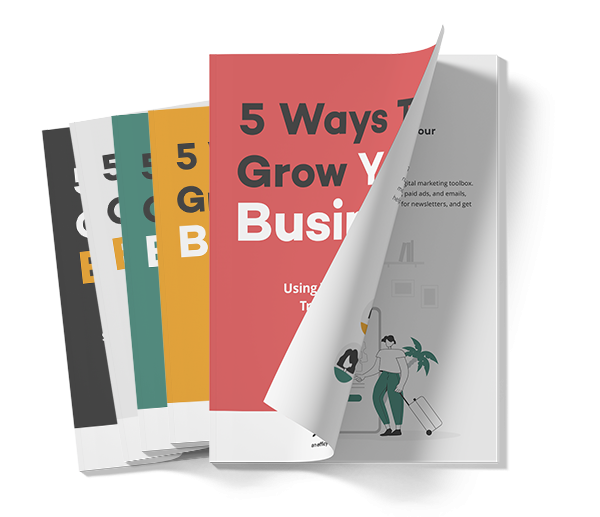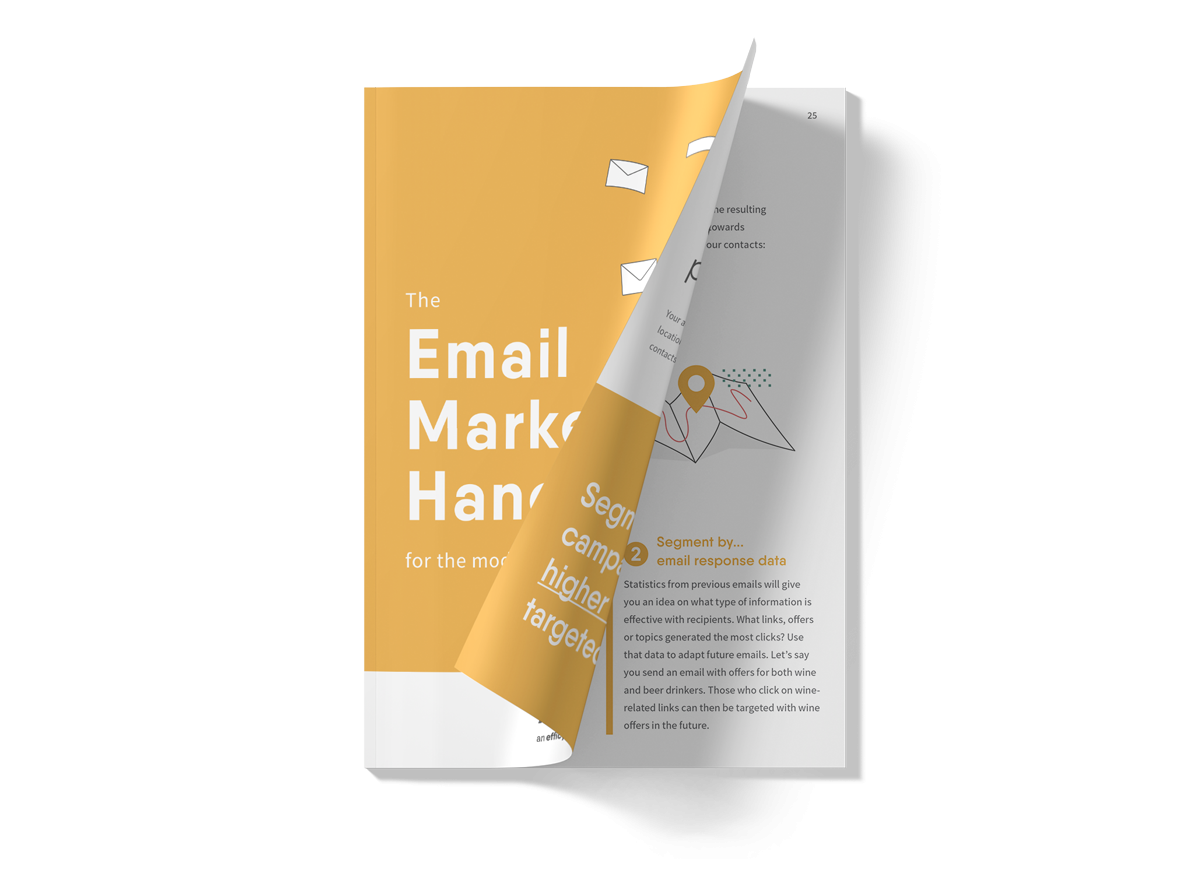6 Easy Ways to Save Your Email Campaigns
Email campaigns can have the power to maintain existing business, as well as to attract new customers. The best part is that the people you communicate with have already shown interest to the extent that they’ve given you their consent to communicate. So, how can you maximise the might of email campaigns with small, yet efficient, means? Let’s walk through six life-saving tips!

1. Boost the Open Rate with a Smashing Subject Line
The basic premise of successful email marketing is that the person opens your email in the first place. But in the average cluttered inbox – this is easier said than done. The first step of enticing the recipient is to write a clear, strong, and attractive subject line.
But why does this matter? Well, if you think about it: If no one bothers to open your email, the remaining steps in this blog post are completely unnecessary. But let’s cut to the chase and answer the burning question: What are the main ingredients if you want to bake a deliciously tempting subject line?
- Use 40-50 characters
- Create a feeling that what you want to say is important and/or urgent
- Keep it simple
- Awaken curiosity
- Have the recipient in mind
The tips mentioned above are all good to have in mind when writing your subject lines. But even more important is that you really set a clear purpose with your subject line. Another tip that can make your open rate go through the roof, is to A/B test your subject line. But more about that later!
Examples of subject lines that hit the spot:
- A sarcastic statement or question: You don’t do these GDPR mistakes, right?
- Pushing the “must know” aspect: 1 out of 3 marketers make this mistake. Do you?
- An unexpected comparison: This is what cats and marketers have in common
- A joke: What did the giraffe say to the email marketer?
- Trend-based topics: What Eurovision Song Contest can teach us about PR
- A list: 5 CRM mistakes you didn’t know you were doing
- A time-limited offer: This doesn’t belong to the ordinary!
- A warning: Listen up! 5 marketing pitfalls you should avoid
These 50 characters may not look like the world - but they can actually be decisive for whether your email is successful or not.
2. Write an Eye-Catching Preheader
Although the subject line is crucial for getting the recipient to even open your email, you need to keep in mind that your subject line should go hand-in-hand with the preheader; the line of copy that typically displayed under the subject line. Together, they form the first impression in the inbox.

Let me start off by asking you a question... Have you ever received an email with a preheader that reads:
- NEWSLETTER. ONLINE VERSION.
- View this email in your browser.
Or even… - UNSUBSCRIBE?
Did these (real-life) examples excite you? Nah, me neither. In fact, the sender missed out on the chance to get my interest, and awaken my curiosity.
The example above ties perfectly into the fact that your email subscribers spend about three to four seconds to decide whether to open your email or not. As such, you should view the preheader as one of the keys towards a bumped open rate. But to succeed with this short, but very important text, you should make sure it connects to the subject and captures the essence of your email.
An optimal preheader should contain 85 to 100 characters, but a good rule of thumb is to try to keep it as short as possible.
3. Segmentation is Key to Relevance - and ROI
Are you familiar with the term segmentation in email marketing? To segment means dividing email messages into smaller segments based on a set of criteria. This is used as a personalisation technique with the purpose of delivering more relevant marketing to your subscribers based on, among other things, geographical location, demographics, interests, and purchase history.

By segmenting, marketers make sure to craft content that aligns with the person and the purpose, instead of sending bulk emails to all their recipients. This leads to greater impact, more conversions, and a higher ROI (Return on Investment).
Examples of ways to segment:
- One common method of segmentation is to use some form of demographic data. First, you need to know something basic about your recipients, such as where they live, their gender, or whether they work or study. After that, you choose to filter your email or send alternative versions of your emails to different groups.
- Another approach is to base your actions on the recipients’ past behaviours. For example: their purchase history or their previous visits to your website. Based on this, you can steer which emails are sent to which individual recipient.
- A third method is based on personal interests. The statistics are available, so why not use it? If a particular group of recipients always reads about, for example, skin care products, this type of information should be dominant in their emails. The group who prefers to read about another topic, such as hair care, won’t receive the latest trends in skin care. Instead, they will read about things that match their interests.
Did you know that APSIS One creates razor-sharp segments by collecting all your data into customer profiles? Read more about it here!
4. Optimise Your Call to Actions to Increase Your Click-Though Rate - and Your Conversions
An email without a call to action is like love without kisses. Think about it: what’s the purpose with your emails that are highlighting products and offers, if not making it easy for your recipients to read about, and act on, the content?
Each email should, therefore, have a clear call to action (CTA). This may include various ways to encourage your recipients to take action. For example, you can entice them to click on a link to your website, complete a survey, or finalise a purchase.
Besides creating copy with a clear call, you should also look into how you can make your call to action pop with graphic design. For example, you can create a layout with a focus on the CTA button, or use visual tools, such as eye-catching colours, to guide the reader’s eyes.

The goal with email marketing is to awaken engagement and incite interest for you and your product. Consequently, you shouldn’t view the email as an end in itself, but rather as a means.
5. Split Test to Turn Opinions into Actionable Insights
Test, test, test: just like with everything else in life, you have to operate by trial and error if you want to learn and gain valuable insights. If you follow this principle, you’ll be able to identify patterns and best practices for your business.
The first thing you should decide on is what parameter you actually want to test. Even if you eventually want to test pretty much everything, it’s important that you only try one thing at a time to get exact results. But what is really essential to test? Here are a few examples:
- Subject line
- Call to action
- Layout
- Copy
- Images
- Offers
- Landing pages
- Send out scheduling
Each and every one of these parameters can have a substantial impact on your conversion rate. For example: the subject line can have an effect on how many people opened the email, while your call to action may have a direct impact on how many people actually perform the desired action.
The method to make it all happen is to A/B test (also called split testing). This means that you create at least two different versions of what’s to be tested. These will then be sent out to randomised recipients on that particular list.
The result is then measured against the value that you’re testing, for example click-through rate. By analysing the results, you’ll be able to get valuable information that you, or your email tool, can act on. The best performing email is thus sent to the remaining recipients on the list.

6. Speed up the Customer Journey with Automation for Lead Nurturing
It’s not possible to ignore the fact that the goal for all businesses and marketers is to convert visitors into customers. However, the process is often far from smooth sailing, as it often involves quite a bit of nurturing and hard work- especially within B2B.
However, many believe that lead management is solely a sales activity, but the fact is that the process starts much earlier than that. It actually begins with the very first interaction with your business. In this convoluted journey, lead nurturing is pivotal.
Therefore, it is important for marketers to understand, and make the most out of every step of the customer journey. As such, it’s important to:
- Personalise the communication with your leads by tailoring the content and the offering to the particular recipient or segment. For instance: a person that downloaded a handbook about Volvos shouldn’t receive courses about a Fiat.
- Use a solution for marketing automation to support your lead management with timely relevance. The behavioural triggers or data points ensure that the user receives the right content at the right stage of the funnel.



